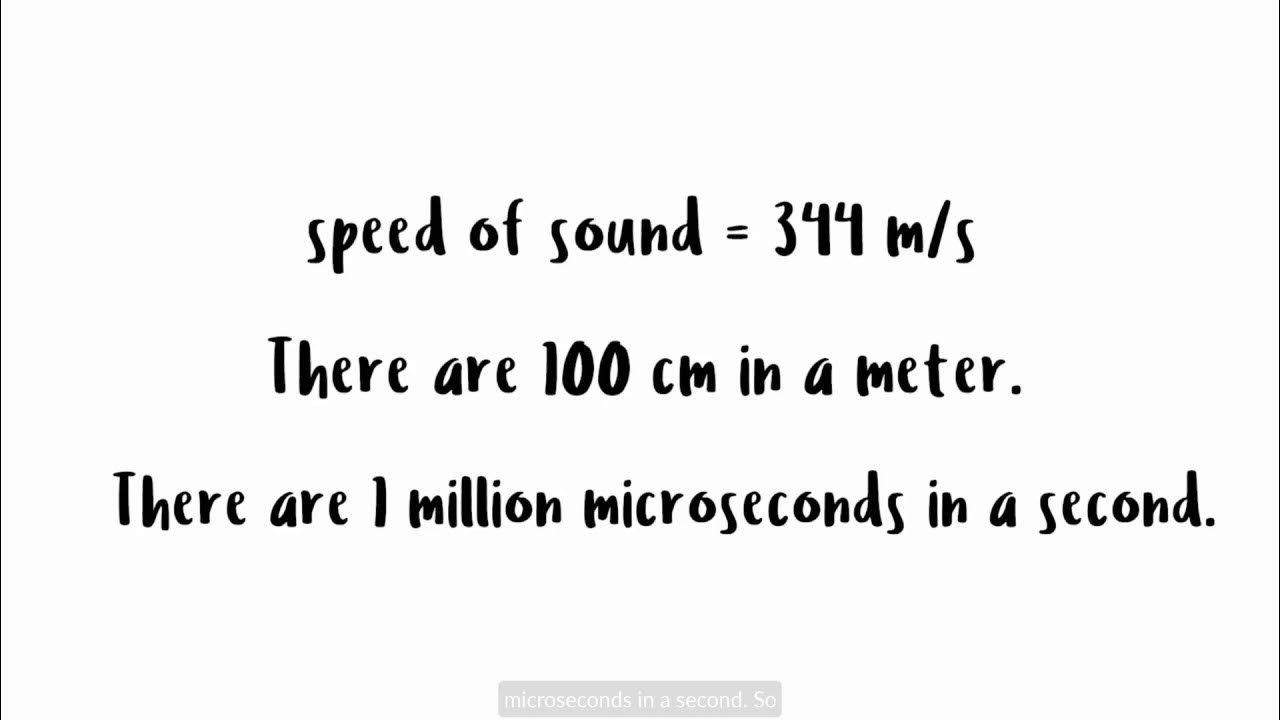Ultrasonic Flow Meter Explained | Working Principles
Summary
TLDRThis video introduces ultrasonic flow meters, explaining how they use sound waves to measure fluid flow rates in pipes. It covers principles like the 'time of flight' method and the Doppler Effect, highlighting their accuracy in various applications such as natural gas pipelines and municipal water systems. The script also touches on the versatility of these meters and their ease of installation without pipe penetration.
Takeaways
- 🌟 Ultrasonic flow meters are one of the many types of flow meters available, with at least eighteen different types in total.
- 🔍 They measure the volumetric flow rate of fluids, which is the amount of fluid moving through a pipe per unit of time.
- 🎓 Ultrasonic flow meters operate based on the transmission of sound waves through the fluid, using principles of physics, mechanics, and electronics.
- 📣 The flow velocity in a pipe is influenced by factors like pressure, temperature, fluid viscosity, and pipe size.
- 💧 Sound waves are transmitted through a fluid by the mechanical oscillations between molecules.
- 🔊 Ultrasonic flow meters use frequencies above the audible range (25 kHz or higher) for more accurate measurements.
- 🛠️ These meters consist of at least one pair of sensors and transducers that can act as both transmitters and receivers of ultrasonic waves.
- ⏱️ The 'time of flight' method measures the difference in time it takes for an ultrasonic pulse to travel with and against the flow, which is proportional to flow velocity.
- 📏 To ensure accuracy, multiple sensor pairs are used to measure at different locations along the pipe circumference, forming chords.
- 💡 Another type of ultrasonic flow meter uses the Doppler Effect, which measures frequency shifts caused by moving particles or bubbles in the fluid.
- 🏢 Ultrasonic flow meters are widely used in high-pressure applications like natural gas pipelines and in municipal water and sewer systems.
Q & A
What is the main focus of the video presented by RealPars?
-The main focus of the video is to explain the working principles of ultrasonic flow meters and how they measure the flow rate of fluids in various applications.
How many types of flow meters are mentioned in the script?
-The script mentions at least eighteen different types of flow meters.
What is the function of an ultrasonic flow meter?
-An ultrasonic flow meter measures the volumetric flow rate of a fluid, which is the number of gallons or liters per unit time.
What physical property is used to measure fluid flow in ultrasonic flow meters?
-Ultrasonic flow meters use sound waves to measure the rate of flow of a fluid moving in a pipe.
How do ultrasonic flow meters generate sound waves?
-Ultrasonic flow meters generate sound waves using a rapidly vibrating piezoelectric crystal that deforms when an electric current is applied.
What is the significance of the frequency used in ultrasonic flow meters?
-Ultrasonic flow meters operate at frequencies above 25 kilohertz, which allows for more accurate measurements and avoids generating sounds in the audible range.
How does the 'time of flight' principle work in ultrasonic flow meters?
-The 'time of flight' principle measures the difference in time it takes for an ultrasonic pulse to travel with the flow and against the flow, which is directly proportional to the flow velocity.
What is a chord in the context of ultrasonic flow meters?
-A chord in ultrasonic flow meters refers to each pair of transmitter and receiver that forms a measurement point at a different location along the pipe circumference.
What are the different mounting methods for sensors in ultrasonic flow meters?
-Sensors can be wetted, built into the wall of the flow meter, or strapped to the exterior of the pipe. Non-contact sensors are less accurate as they must travel through the pipe wall and fluid.
How does the Doppler Effect play a role in ultrasonic flow meters?
-The Doppler Effect is used in ultrasonic flow meters to measure flow rate by detecting the shift in frequency of reflected sound waves from air bubbles or particles in the fluid.
In which applications are ultrasonic flow meters commonly used?
-Ultrasonic flow meters are commonly used in high-pressure, high-flow applications like natural gas pipelines, municipal water, and sewer systems.
Outlines

This section is available to paid users only. Please upgrade to access this part.
Upgrade NowMindmap

This section is available to paid users only. Please upgrade to access this part.
Upgrade NowKeywords

This section is available to paid users only. Please upgrade to access this part.
Upgrade NowHighlights

This section is available to paid users only. Please upgrade to access this part.
Upgrade NowTranscripts

This section is available to paid users only. Please upgrade to access this part.
Upgrade Now5.0 / 5 (0 votes)





